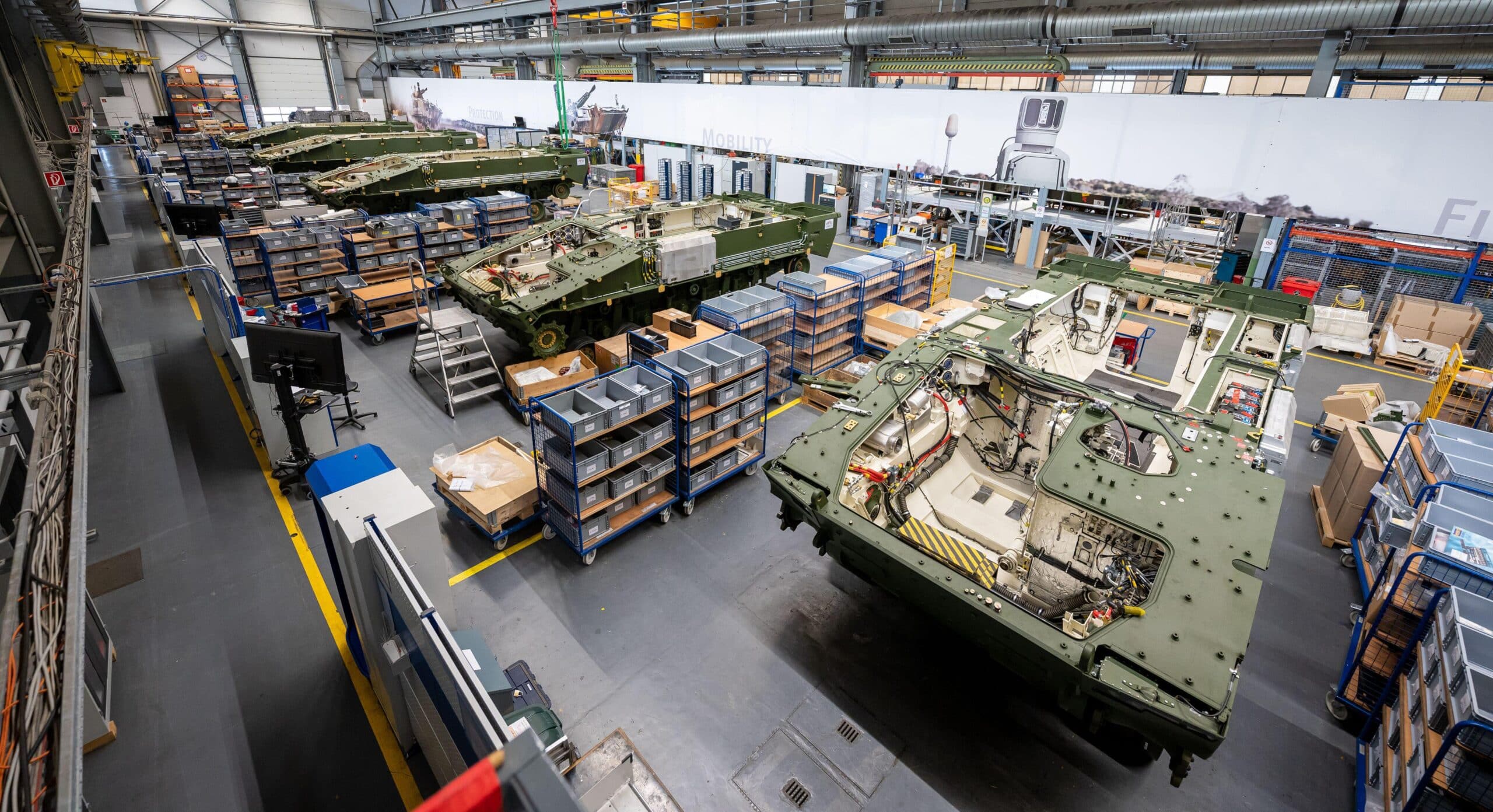In July 2025, Saab’s CEO Micael Johansson warned that Europe’s defence industry, despite its innovation, risks falling behind global competitors due to its fragmentation and a lack of scale. His warning echoes the 2024 Draghi report on EU competitiveness, which raised similar concerns. The message is clear: while defence budgets are rising, production capacity is not keeping pace.
The Scaling Challenge in Europe
Countries like the Netherlands, France, Germany and the Nordic nations are dramatically increasing their defence spending in response to growing geopolitical instability and NATO commitments. However, the region’s defence industry is still highly fragmented, with national priorities often outweighing collective efficiency.
The European defence ecosystem is composed of a patchwork of thousands of small and medium-sized enterprises (SMEs), alongside a handful of national champions. This stands in sharp contrast to the United States, where the industry is dominated by a few large, consolidated defence giants.
The appointment of the EU’s first Defence Commissioner, Andrius Kubilius, marks a turning point. His mandate includes consolidating the defence industry, boosting investment in advanced technologies, and strengthening Europe’s strategic autonomy. But policy alone will not solve the operational bottlenecks – ramping up requires fundamental change in how the industrial base operates.
Key Pain Points in Scaling Up
- Procurement Complexity Across Borders
The billions pledged in increased defence spending have yet to translate into streamlined, scalable orders and financial commitments for the European industry. Procurement in Europe remains fragmented, with countries often favouring domestic suppliers and developing systems to meet national specifications. This often leads to a proliferation of design variants – each tailored to slightly different operational doctrines – which adds complexity and drives up costs and lead time. While political alignment is improving, operational coordination on specifications, timelines, and contracting is still lacking.
- Fragmented Supply Chains
Europe’s defence sector faces significant ramp up challenges due to its fragmented supply chains and only few strong industrial anchors to coordinate efforts. The sector’s resilience and operational capacity rely heavily on thousands of dual-use SMEs, especially in countries like the Netherlands. These companies – including startups and family-owned businesses – form the backbone of the industry, despite often lacking the scale, digital infrastructure, and capital intensity of large original equipment manufacturers (OEMs). This fragmentation poses a serious risk: pushing high demand into an already strained and poorly coordinated supply chain can trigger uncontrolled price increases and a decline in delivery reliability.
- Scaling from Prototype to Series Production
Modern warfare is evolving at an incredible pace, with battlefield requirements changing almost as quickly as new technologies emerge. Radar systems, for example, must not only detect long-range threats but also distinguish birds from cheap consumer drones. These systems must be fast and mobile – survivability is non-negotiable.This pace of change creates a paradox: defence organizations must industrialize cutting-edge innovations and move into series production, even as requirements continue to evolve – sometimes forcing a near restart mid-development. Navigating this challenge calls for robust processes around rapid prototyping, baselining, configuration change management, and design for manufacturing.
- Shortage of Technical Personnel
Companies must find new ways to win the war on talent: attracting, training, and deploying people faster and smarter than ever before. In many defence companies, production has tripled or even quadrupled within just a few years – resulting in a surge of open vacancies. Yet the region faces a growing shortage of skilled workers, from electromechanical specialists and assembly technicians to software developers, quality inspectors, and factory planners. Onboarding and training take time, something the industry cannot afford to waste.
From Fragmentation to Orchestration
Europe’s defence industry will not scale through policy alone. To realise the growth, a fundamental transformation in how the industrial base operates is essential. Sales representatives, engineers, production workers, quality engineers, inventory planners, procurement teams and suppliers must operate as one – because even a single material shortage or quality issue can derail an entire production schedule.
This transformation hinges on the ability to orchestrate the supply chain. OEMs must take the lead in aligning Tier-1, -2, and -3 suppliers, enabling early visibility into demand, shared forecasting, long term commitments and coordinated planning. Without this alignment, suppliers remain reactive, and scalable production remains out of reach.
A critical enabler is the integration of end-to-end planning processes. Sales and Operations Planning (S&OP) should drive cross-functional alignment across sales, engineering, procurement, and production. Master Production Scheduling (MPS) and Rough-Cut Capacity Planning (RCCP) must be tightly connected. Material Requirements Planning (MRP) should be embedded in program execution to ensure timely procurement of the right materials. With these foundations in place, procurement must evolve from a transactional function to a strategic one – securing access to capacity and critical materials (microchips, rare earth, etc.), while implementing mechanisms to enhance redundancy and share risk across the supply chain.
A major challenge in Europe’s defence industry is the tendency to prioritize short-term wins by tailoring products to individual client specifications. While this may help secure contracts, it keeps in place the engineer-to-order mindset that undermines long-term efficiency and scalability. Companies must resist the urge to over-customize and instead advocate for a shift toward standardized product platforms to enable make-to-forecast production strategies.
The momentum is here
The opportunity is clear: Europe has the innovation, the talent, and the political will. What is needed now is operational alignment and industrial leadership. Ramping up defence is not just about policy or producing more – it is about producing smarter, faster, and together. The time to act is now, before complexity and fragmentation become strategic liabilities.







